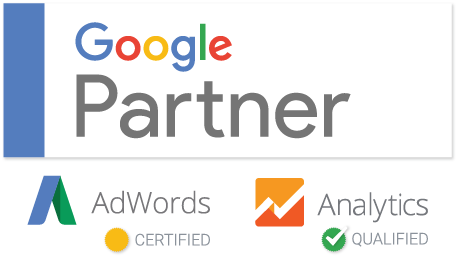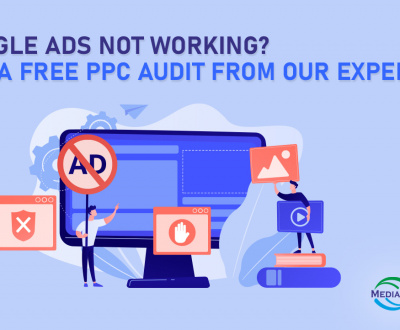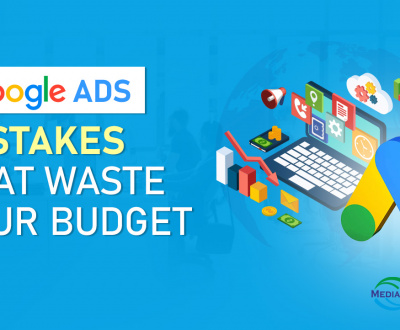How Much Does Google Ads Really Cost for the US market? (2025 Budget Guide)
- September 25, 2025
- PPC ads
Google Ads costs, and for this reason, everyone wants to know how much Google Ads costs. If you are reading this, you probably want to run paid ads on Google if it is affordable. Google Ads won’t cost much if you know the benchmarks Google uses to calculate pricing. However, how much Google Ads costs you depends on how you manage your ad campaigns.

Luckily, there are some benchmarks you can use to calculate the cost of Google Ads. However, you need to keep in mind factors that can affect your Google Ads pricing in the long run. But don’t worry. In this guide, we’ll cover everything, including industry-specific costs, factors affecting pricing, examples, and tips to keep costs low. We hope this guide helps you understand Google Ads pricing and how to set a realistic budget.
This guide sheds light on factors that affect Google Ads pricing in 2025. Factors such as high competition, shifting user behavior, smart bidding strategies, and GA4 influence Google Ads pricing. In this situation, it becomes most important to monitor CPC trends, Quality Score, and ROI to stay competitive and ensure desired results.
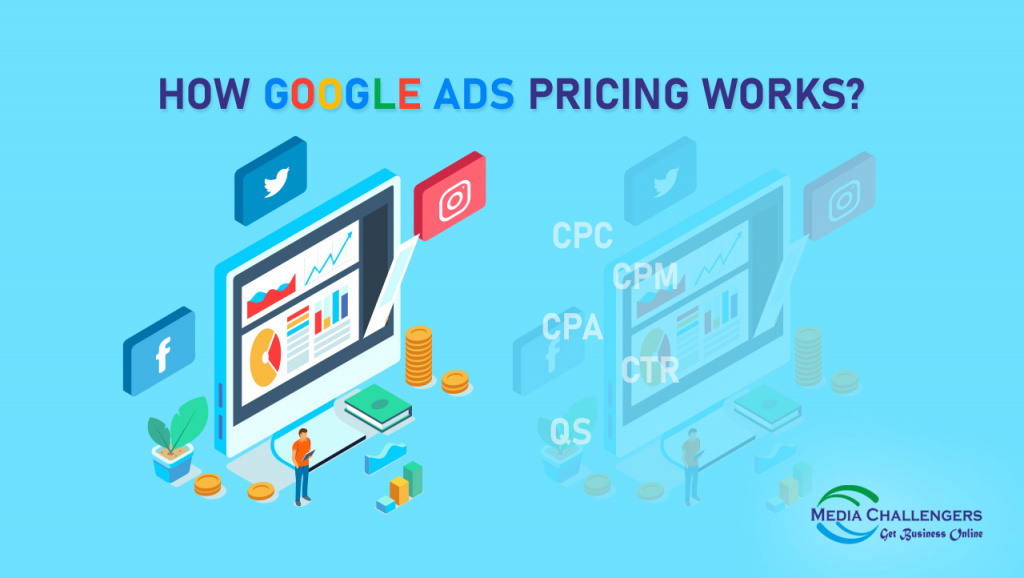
How Google Ads Pricing Works?
Google sells space on its properties through an auction system, where everyone gets an equal opportunity to bid for relevant space.
Google uses the following benchmarks to determine ad pricing:
1. Cost-Per-Click (CPC): Every click costs the advertiser. The price of a click is determined by the keyword competition, ad quality, and bidding strategy. However, a high quality score can help reduce the CPC and achieve more clicks with minimum ad spend.
2. Cost Per Mille (CPM): Advertisers who don’t want to pay for clicks can choose CPM. Google fixes an amount for 1,000 ad impressions and deducts the amount from accounts. The advertisers pay for impressions instead of clicks. It helps expand reach to a wide range of audiences without increasing the budget.
3. Cost Per Acquisition (CPA): Advertisers choose to pay for specific actions, such as purchase, sign-up, or download. It is a performance-based marketing model that allows businesses to save money. They pay only when the visitors take a desired action on their ads.
4. Click-Through Rate (CTR): It shows the number of clicks advertisements receive. The formula for calculating CTR is:
- Total Clicks ÷ Total Impressions x 100
It is a benchmark for ad relevance and engagement. A higher CTR increases Quality Score, reduces cost, and boosts the overall performance of ads.
5. Quality Score (QS): Google assigns a Quality Score (1 to 10) to each advertisement based on its relevance to search queries. A higher score (7-10) rewards ads with better placement and lower costs.
Here’re popular bidding models:
1. Manual: Advertisers set bids manually by making necessary changes in Google settings. It allows them total control over their budget and spending. Experienced marketers often choose manual settings to optimize their bids.
2. Automated: Google automatically sets bids based on campaign budget and goals. It employs machine learning to set, track, and adjust bids in real-time for maximum clicks, impressions, and conversions.
3. Return on Ad Spend (ROAS): It is the revenue earned on each dollar spent on Google Ads. The formula for calculating ROAS is:
- Total Conversion Value ÷ Ad Spend
A higher ROAS indicates efficiency and profitability of ad campaigns. Advertisers use ROAS for optimizing budget allocation between campaigns.
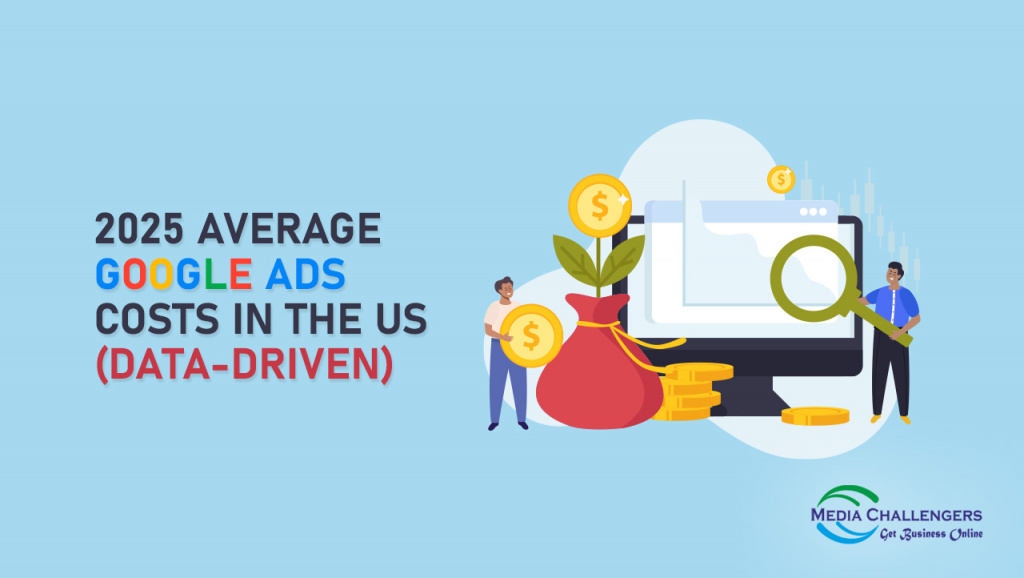
2025 Average Google Ads Costs in the US (Data-Driven)
Here’s the breakdown of average CPC of Google Search (GS) and Google Display Network (GDN) for various industries in the US
High CPC Industries:
- Finance & Insurance: $3.44 (GS) and $0.86 (GDN)
- Attorneys & Legal Services: $8.94 on (GS)
- Consumer Services: $6.40 on (GS)
- B2B: $3.33 (GS) and $0.79 on (GDN)
- Industrial & Commercial: $4.14 (GS)
Lower CPC Industries:
- E-commerce: $1.16 (GS) and $0.45 (GDN)
- Travel: $0.43 (GDN)
- Arts & Entertainment: $1.72 (GS)
- Real Estate: $1.40 (GS)
- Automotive: $2.34 (GS)
Monthly ad spend estimates for small, medium, and large businesses are as follows:
| Business Size | Typical Monthly Ad Spend |
| Small | $1K – $3K (range $200–$10K) |
| Medium | $7K – $30K |
| Large Enterprise | $20K – $50K+ (up to $80K+) |
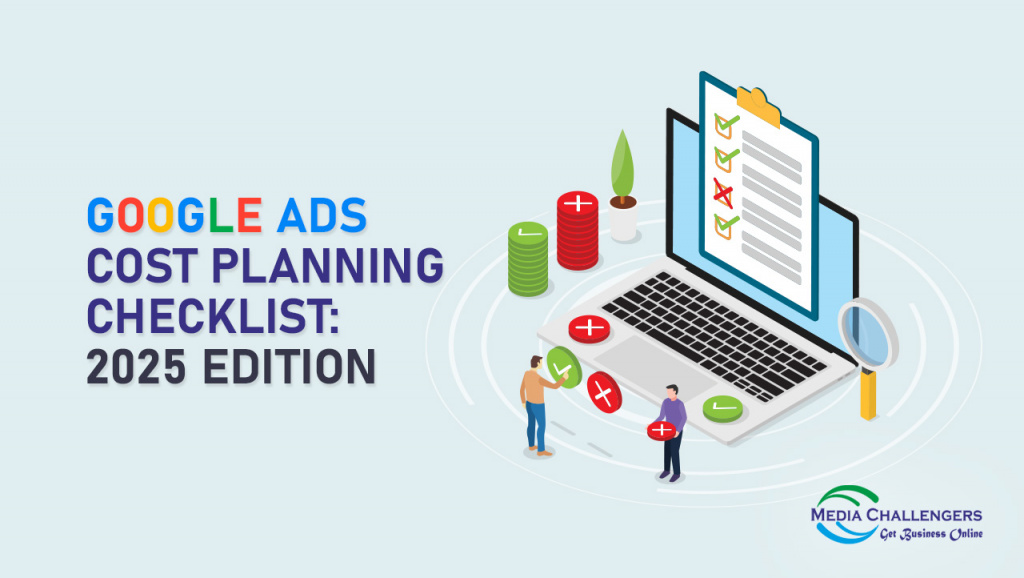
Google Ads Cost Planning Checklist: 2025 Edition
1. Monthly Ad Budget: Set a monthly ad budget for Google Ads by analyzing past performance of your ads, determining goals, estimating ROAS, and the competition.
2. Average CPC for Your Industry: Calculate the average CPC of your industry with the help of Google Ads Keyword Planner or by analyzing industry reports on keyword cost.
3. Target Conversions: Set GA4 to improve conversion targeting by optimizing landing pages, segmenting audience, creating compelling CTAs, and tracking actions.
4. Geo and Device Targeting: Target your Google Ads according to geo-location and the device you target. It improves ad relevance, boosts conversions, and reduces waste spend by targeting the right customers at the right time.
5. Ad Testing Budget: Keep a budget for testing various formats and audiences to identify high-performing ads. It will help determine the right ad format that works for your business.
6. Agency or Freelancer Fees: Spare 10% to 30% of your ad spend for an agency or freelancer working on the ad campaigns. You will need to pay for campaign setup, management, and optimization.
7. Tools & Software Fees: Add necessary fees for using tools and software for analytics, automation, and optimization. This fee can increase your overall Google Ads budget, but it is a necessary expense to boost your productivity.
Check the Google Ads checklist for your future use. The checklist will help set Google Ads campaigns and achieve targets.
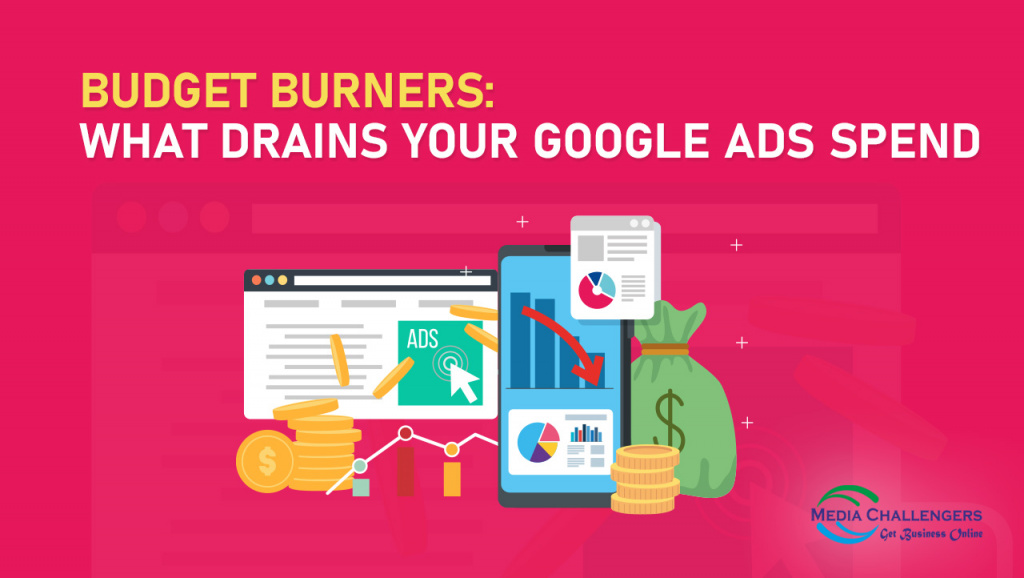
Budget Burners: What Drains Your Google Ads Spend
1. Poor Keyword Match Types
Choosing the right keyword match type – broad match, phrase match, and exact match – is necessary to control traffic quality, increase ad relevance, and enhance ad spend. A mismatch in keyword type leads to irrelevant traffic, a low conversion rate, and wasted ad spend. Check your keyword match type if your ads aren’t performing well.
How to fix it: Audit your search term reports to identify irrelevant searches and add them to the negative keyword list. Continuously test match types and align keywords closely with the search intent.
2. No Negative Keywords
Negative keywords are necessary to prevent Google from displaying your ads on loosely related searches. By adding negative keywords, you exclude searches that do not match your business. Like targeted keywords, you should also update your negative keyword list to improve targeting, CTR, and ROAS. When was your last update to your negative keyword list?
How to fix it: Review your search term reports regularly to identify negative searches and update your negative keyword list for accurate targeting.
3. Ignoring Quality Score
The Quality Score is a crucial Google Ads metric. Measured on a scale of 1-10, the Quality Score of a campaign shows its relevance to the search queries. Google uses Quality Score for ad placement and CPC. An improved score of 7+ can reward you with better ad placement, lower costs, and higher ROAS.
How to fix it: Enhance ad relevance, improve keyword targeting, optimize landing pages, and increase click-through rate (CTR) to improve the overall Quality Score of your ads.
4. Bad Landing Pages
Landing page design plays a crucial role in improving conversions. A well-designed and optimized page downloads decently on all platforms, attracts attention, and increases engagement. Check if your landing page has clear headlines, a strong call to action, and mobile optimization. Removing distractions improves performance, lowers bounce rate, and increases ROI.
How to fix it: Simplify the landing page design, match search intent, add clear CTAs, optimize the landing page for mobiles, and increase page load speed to improve the landing page’s performance.
5. Not Tracking Conversions
Conversion tracking is important for the overall performance of Google Ads. It shows important data that you can use to optimize your ads. For example, you can see what is working for your ads and what isn’t. Running ads without conversion tracking amounts to running ads blindly, poor targeting, missed opportunities, and wasted ad spend.
How to fix it: Verify tag setup in Google Ads, use Google Tag Manager, test triggers, and ensure the settings match with your Google Ads objective.
6. Over-Relying on Broad Match or Smart Campaigns
Broad match doesn’t guarantee relevant traffic. Google will show your ads in searches related to the targeted keywords. It works well, but over-reliance on broad match phrases often leads to disappointment and lost budget. You need to add negative keywords to prevent your ads from showing up for irrelevant searches.
How to fix it: Use negative keywords from the search term report to neutralize irrelevant searches or switch to phrase/exact match keywords.
Case Study
A home cleaning service in San Diego, California, decided to go online to take its services to the targeted audience, obviously with Google Ads. Being a small company, it had a limited budget to run paid ads. Eventually, the business hired an experienced freelancer to set up a campaign on a limited budget.
Initial Budget Planning:
- Monthly Budget: $3,000
- Average CPC: $4.50
- Geo Setting: San Diego – East Village
- Daily Budget: $100/day
- Estimated Clicks:
- Monthly Budget ÷ CPC = clicks/month
- 3000 ÷ 4.50 = 667
Conversion Tracking Setup:
- Goal: Booking online home cleaning services
- First Month Conversion Rate: 6%
- Estimated Conversions:
- Clicks x conversion = monthly conversions
- 667 x 6 = 40
- Cost per Acquisition (CPA):
- Monthly Budget ÷ conversions = rate per/booking
- 3000 ÷ 40 = 75
Campaign Refinement in Later Months
Added negative keywords to remove “Free” and “DIY” phrases
Improved ad copy early discount: 25% off first service
Optimized landing page for mobiles
Result Improvement:
- Average CPC: $4
- Conversion Rate: 9%
- Clicks: 750/month
- Conversions: 68/month
- Cost per Acquisition:
- Monthly Budget ÷ Conversions = rate per/booking
- 3000 ÷ 68 = 44
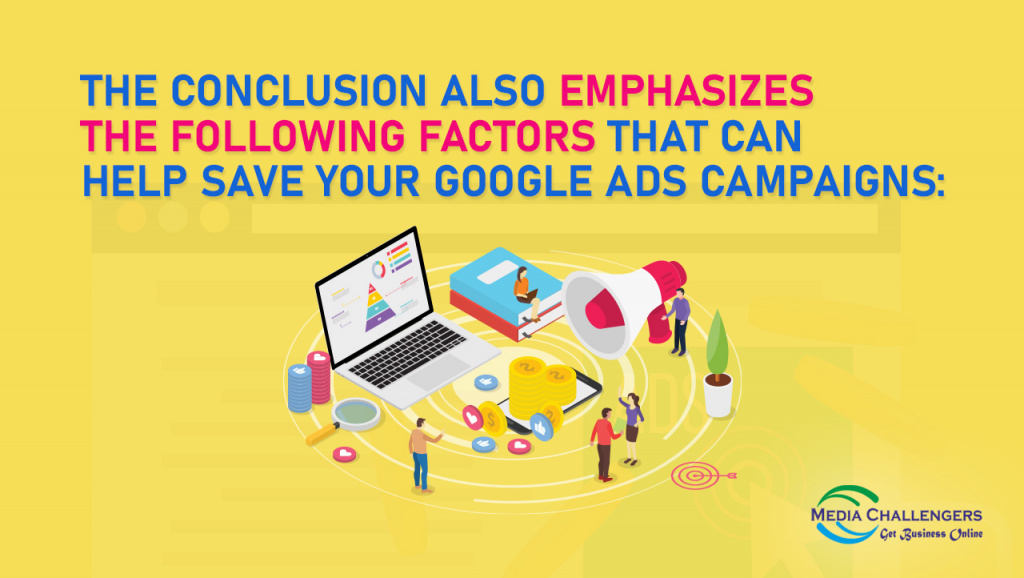
Conclusion
The home cleaning service company demonstrated patience in running Google Ads. The decision to hire an experienced freelancer proved right. The freelancer calculated the expenditure with due care and took concrete steps that delivered results. The case study emphasizes the following factors:
1. Keyword Competition: Popular keywords get maximum bids because everyone wants to bid on them. Increased bidding drives the cost-per click (CPC).
2. Quality Score: A low Quality Score drives cost. It is a diagnostic tool to understand how an ad performs. It measures relevance, quality, and overall performance.
3. Bidding Strategy & Budget: An Aggressive bidding strategy coupled with a high daily budget tends to drive costs. Similarly, automating strategies with Target ROAS or Maximize Conversions can drive the cost.
The conclusion also emphasizes the following factors that can help save your Google Ads campaigns:
1. Testing: It helps identify what works best for Google Ads. For example, you can find the keywords, ad copy, landing page design, and bidding strategy that can reduce CPC and increase ROI.
2. Tracking: It is crucial to track conversions in Google Ads to notice user behavior, study trends, and identify wasted spend. The data generated helps make informed decisions, optimize campaigns, and increase ROI.
3. Refining: Google Ads is refined with new keywords, bids, and targets. The objective of refinement is to boost ad relevance, control costs, enhance conversions, and maximize ROI.
Maximize your ROI, get better leads, lower CPC, and target potential customers. Schedule a free consultation today to learn more about our Google Ads services.
Media Challengers, led by Birendra Kumar, is the foremost SEO and PPC services company, specializing in implementing a comprehensive range of online marketing techniques to enhance business profitability. As a Google certified agency partner, we bring expertise in SEO (Search Engine Optimization) and PPC (Pay-Per-Click) strategies to drive successful digital campaigns.
Do you want an instant result and traffic?
You are at the right place, we are committed for instant result (Call, Query Form, Traffic, view, etc..) generation. If you have any questions please let me know.
Our last month campaign performance

Recent Posts
- How Much Does Google Ads Really Cost for the US market? (2025 Budget Guide) September 25, 2025
- Google Ads Not Working? Get a Free PPC Audit from Our Experts September 7, 2025
- Top 10 Google Ads Mistakes That Waste Your Budget (And How to Fix Them) August 11, 2025

